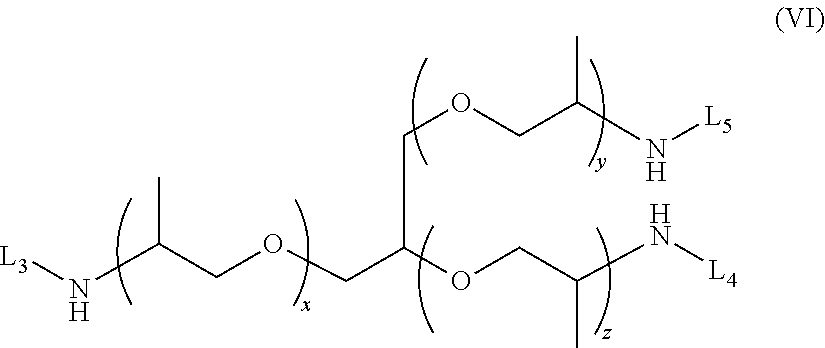Textile temperature regulating agents
a temperature regulation agent and textile technology, applied in the field of textile temperature regulation agents, can solve the problems of poor wash durability, pcms application directly to the surface of textile articles, picking up dirt, etc., and achieve the effects of enhancing wash durability, superior moisture management properties, and enhancing the durability of textiles
- Summary
- Abstract
- Description
- Claims
- Application Information
AI Technical Summary
Benefits of technology
Problems solved by technology
Method used
Image
Examples
Embodiment Construction
[0053]As described herein, the first aspect of the invention described herein provides the use of the compound according to formula (I) for imparting a temperature regulating effect to a textile. The second and third aspects of the invention described herein provide a method of manufacturing a temperature regulating textile. The fourth aspect of the invention described herein provides a compound according to formula (I) for imparting a temperature regulating effect to a textile.
[0054]It will be appreciated that the temperature regulating effect referred to herein relates to ability of a textile or textile article as described herein to absorb or release heat to regulate the temperature of the surrounding environment (e.g. the skin temperature of a user coming into contact with the textile or article during use). The textile or textile articles of the present invention may possess cooling and / or warming properties.
[0055]In desirable embodiments, the temperature regulating article or ...
PUM
| Property | Measurement | Unit |
|---|---|---|
| melting point | aaaaa | aaaaa |
| melting point | aaaaa | aaaaa |
| melting point | aaaaa | aaaaa |
Abstract
Description
Claims
Application Information
 Login to View More
Login to View More - R&D
- Intellectual Property
- Life Sciences
- Materials
- Tech Scout
- Unparalleled Data Quality
- Higher Quality Content
- 60% Fewer Hallucinations
Browse by: Latest US Patents, China's latest patents, Technical Efficacy Thesaurus, Application Domain, Technology Topic, Popular Technical Reports.
© 2025 PatSnap. All rights reserved.Legal|Privacy policy|Modern Slavery Act Transparency Statement|Sitemap|About US| Contact US: help@patsnap.com



